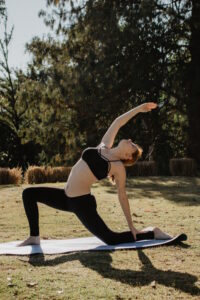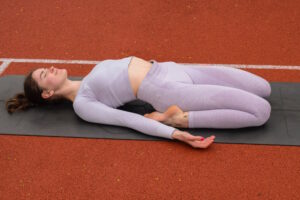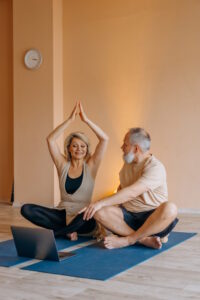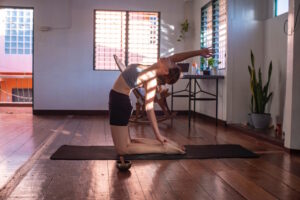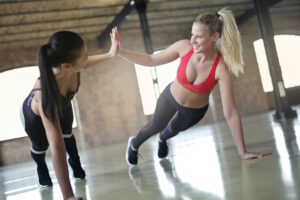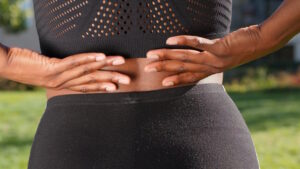
As a leading expert in Pilates for Back Pain Relief, I am dedicated to exploring the numerous benefits of Pilates in alleviating back pain and promoting a healthy spine. Back pain is a common issue that affects people of all ages and lifestyles, often caused by poor posture, muscle imbalances, or physical strain. Pilates offers a gentle yet effective approach to strengthen the core, improve flexibility, and promote proper body mechanics, all of which contribute to back pain relief. In this comprehensive guide, we will delve into the effectiveness of Pilates for back pain relief, the best Pilates exercises for addressing back pain, and how Pilates compares to yoga in this context.
Does Pilates help with back pain?
Yes, Pilates can be highly beneficial for individuals dealing with back pain. Pilates focuses on strengthening the core muscles, which include the muscles of the abdomen, lower back, and pelvic floor. A strong core provides support and stability to the spine, reducing the pressure on the back and alleviating pain.
Pilates also emphasizes proper body alignment and posture, which can help correct muscle imbalances and reduce strain on the spine. Additionally, Pilates exercises promote flexibility and mobility, which are essential for maintaining a healthy back and preventing future injuries.
By engaging in regular Pilates practice, individuals with back pain can experience improved muscle strength, reduced discomfort, and better overall spinal health.
Which Pilates is best for back pain?
When using Pilates for back pain relief, it is essential to focus on exercises that specifically target the core and promote spinal alignment. Here are some of the best Pilates exercises for back pain relief:
1. Pelvic Tilts: This exercise helps mobilize the spine and strengthen the deep core muscles, promoting better lumbar stability.
2. The Hundred: This exercise targets the abdominal muscles and helps improve core strength, essential for supporting the back.
3. Swan: The Swan exercise helps improve spine extension, alleviating tightness in the back muscles and enhancing flexibility.
4. Supine Spinal Twist: This exercise gently stretches the back and promotes spinal mobility, relieving tension and discomfort.
5. Leg Circles: Leg circles help improve hip mobility and flexibility, which can reduce strain on the lower back.
What is the best exercise to heal back pain?
While different exercises may work best for different individuals, one of the most effective Pilates exercises for healing back pain is the “Cat-Cow” stretch. This exercise combines two movements to promote spinal flexibility and relieve tension in the back.
Cat-Cow Stretch:
1. Start on your hands and knees in a tabletop position, with wrists aligned under shoulders and knees under hips.
2. Inhale and arch your back, lifting your head and tailbone towards the ceiling (Cow Pose).
3. Exhale and round your back, tucking your chin to your chest and drawing your belly button towards your spine (Cat Pose).
4. Repeat the sequence for several breaths, focusing on the gentle movement of the spine.
The Cat-Cow stretch helps release tension in the back, improves spinal mobility, and gently stretches the muscles along the spine, providing relief for back pain.
Is yoga or Pilates better for back pain?
Both yoga and Pilates can be beneficial for back pain relief, but they offer different approaches to achieving it. Yoga focuses on holding poses, stretching, and promoting overall flexibility and relaxation. On the other hand, Pilates emphasizes core strength, alignment, and controlled movements.
For individuals with back pain, Pilates may be more effective in directly targeting the core muscles that support the spine. Pilates also provides a structured approach to strengthening the core, whereas yoga poses may vary in their focus on the core muscles.
However, each person’s experience may differ, and some individuals may find more relief through yoga practice, especially if their back pain is exacerbated by tension and stress. Ultimately, the best approach is to try both and see which practice suits your body and needs best.
Summary
Pilates for Back Pain Relief offers a gentle yet effective approach to strengthening the core, improving flexibility, and promoting proper body mechanics. Pilates exercises such as Pelvic Tilts, The Hundred, Swan, Supine Spinal Twist, and Leg Circles are particularly beneficial for addressing back pain. Additionally, the “Cat-Cow” stretch is a highly effective exercise for healing back pain. Both yoga and Pilates can be helpful in alleviating back pain, and the choice between the two depends on individual preferences and needs. By incorporating Pilates into your routine, you can experience reduced back pain, improved spinal health, and enhanced overall well-being.
